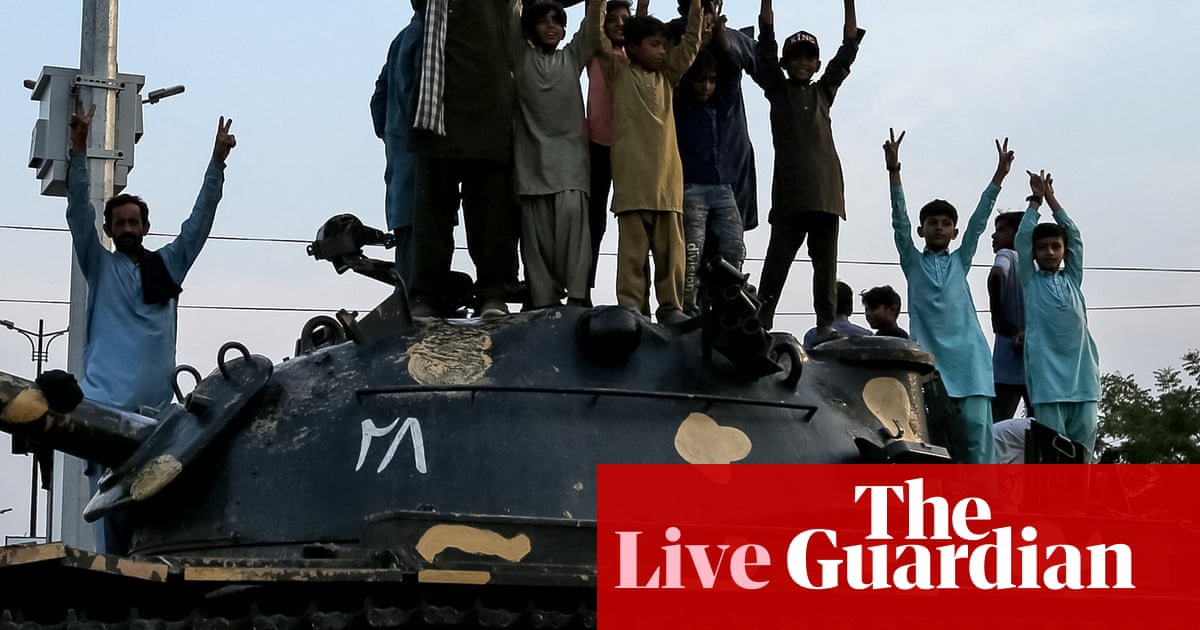Ceasefire Tensions: A Comprehensive Look at the India-Pakistan Conflict
In the wake of renewed tensions between India and Pakistan, recent developments have sparked significant concern on both sides of the border. Reports indicate that just hours after a ceasefire agreement was announced, India’s Foreign Secretary Vikram Misri claimed that Pakistan had already violated the terms. Misri urged Pakistan to cease such violations, stating, “India’s armed forces have been instructed to strongly deal with violations along the border.” Witnesses from Jammu and Srinagar reported hearing explosions and observing projectiles in the sky, heightening fears of an escalation in conflict.
International Stakeholders Step In
As tensions escalated, international players like China have expressed a willingness to mediate. Chinese Foreign Minister Wang Yi voiced Beijing’s support for both nations’ efforts to achieve a lasting ceasefire, stating that China would remain involved in facilitating dialogue between India and Pakistan. Wang emphasized the need for calm and restraint from both sides following reports of ceasefire violations.
In a separate communication with India’s National Security Advisor, Ajit Doval, Wang reiterated the importance of avoiding unnecessary escalations and said he hoped both nations would achieve a comprehensive resolution. His remarks reflect China’s vested interest due to its geographical proximity and longstanding relations with both countries.
Pakistani Leadership Responds
The political landscape in Pakistan is also shifting in response to the day’s events. Prime Minister Shehbaz Sharif addressed the nation, thanking countries such as Saudi Arabia and China for their mediation in reaching the ceasefire agreement. Sharif labeled the ceasefire as beneficial for all involved, while simultaneously accusing India of spreading misinformation and committing acts of violence within Pakistani territory.
In sharp contrast, Pakistan’s Information Minister Attaullah Tarar refuted claims of ceasefire violations, labeling them as baseless and calling the ceasefire a moment of celebration for Pakistan. His statements highlight the narrative conflict existing between the two countries, where each side seeks to control the perception of events both domestically and internationally.
Renewed Fighting Reports
Despite the ceasefire announcement, reports of skirmishes persisted, particularly in Jammu. Indian officials noted drone attacks and projectiles, indicating active military engagement. Notably, the military response from India prompted reactions from officials, including comments from UK Prime Minister Keir Starmer, who emphasized the need for a sustainable ceasefire.
Military representatives from both nations have yet to clarify the ongoing incidents, which have further complicated the fragile situation following the supposed agreement.
Global Voices Weigh In
Global leaders are monitoring the situation closely. U.S. President Donald Trump announced the ceasefire, claiming a role in mediating talks between the two nations. Following the announcement, reactions from various leaders highlighted a shared concern for stability in the region. UN Secretary-General spokesperson Stéphane Dujarric commended the ceasefire agreement as a positive step toward ending hostilities.
The humanitarian aspects of the conflict remain a pressing issue, as civilians on both sides have been adversely affected by the escalation. Leaders are calling for sustained dialogues to address underlying grievances, notably the long-standing dispute over Kashmir.
Public Reaction in India and Pakistan
The public response to the ceasefire announcement has juxtaposed celebration with anxiety. In various Pakistani cities, jubilant crowds gathered, waving flags and chanting slogans as a reflection of their relief. Conversely, in India, social media reactions have included skepticism about the sustainability of peace, with local leaders voicing concerns over the renewed violence despite the ceasefire.
Former Jammu and Kashmir Chief Minister Omar Abdullah expressed disbelief regarding the maintenance of the ceasefire, posting updates about explosions that disrupted the evening in Srinagar. This commentary mirrors the sentiments of many residents who have lived through cycles of conflict.
The Bigger Picture
The ceasefire agreement itself is a crucial, albeit fragile, step following a tumultuous period marked by military skirmishes and a tragic terror attack in Kashmir that left 26 people dead. Speculation about the underlying motivations for the ceasefire lingers, with both sides interpreting the actions of the other through lenses of historical grievances and national security priorities.
As the situation continues to evolve, the potential for a new narrative battle looms. How the various stakeholders position themselves in the aftermath of these events will materially affect the likelihood of a long-lasting peace agreement. Each country has a vested interest not only in securing its immediate borders but also in framing the broader geopolitical narrative that influences international relations in South Asia.
By closely watching the developments of both diplomatic dialogues and public sentiment, the world remains alert to the possibility of renewed conflict, even as leaders strive for stability in this historically volatile region.


